Where to live in Rome? Here is a guide to Rome’s best neighborhoods.
“When in Rome, do as the Romans do,” as the well-worn saying goes… but how does one live like a Roman when there are so many neighborhoods to choose between?
The Eternal City is home to dozens of neighborhoods with their own distinct personalities and characteristics. As it turns out--there are many ways to live like a Roman. This list will help you get to know some of Rome’s most popular neighborhoods and decide which Roman way of life is best for you.
Trastevere
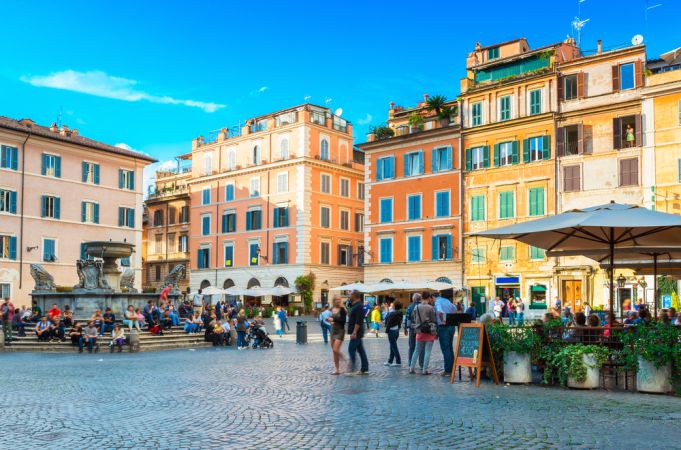
Trastevere is the neighborhood most tourists have in mind when they envision a trip to Italy. With sunset-colored buildings dripping with ivy and narrow cobblestone streets, Trastevere offers a picturesque, small-town atmosphere in the heart of the city.
Grab a coffee or spritz at the famed Bar San Calisto, which has hosted guests such as Anthony Bourdain, or go for a gelato at Otaleg, where you can take your pick of experimental or traditional flavors. In the evening, Piazza Trilussa, the small piazza facing the Tiber River and Ponte Sisto bridge, hosts live musical performances.
Around the corner, Piazza Santa Maria is a hotspot for street artists. Here, expect the unexpected: magicians, fire spinners, jugglers, and more. Trastevere is a great neighborhood for tourists and expats, as it is lively, welcoming, and many of its residents speak English fluently.
This neighborhood is a great hopping-off point for visiting other parts of the city, as the number 8 tram runs through Trastevere, connecting it to the Centro Storico.
Historic Centre
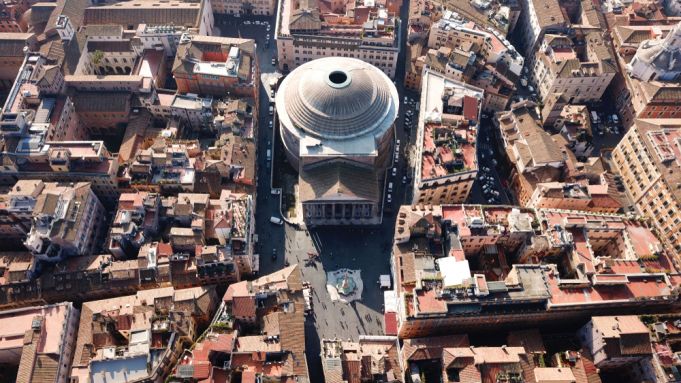
The Centro Storico, or Historic Centre, is where most tourists will spend much of their time in Rome.
It is home to Via del Corso, Rome’s biggest shopping street, and sites such as Piazza Navona and the Pantheon. While the Centro Storico offers a gorgeous mix of ancient, baroque, and modern architecture, it is usually jam-packed with tourists.
For this reason, the Centro Storico tends to be more expensive than other parts of the city. Many tourists choose to stay in Centro Storico for the accessibility of the Trevi Fountain, Colosseum, and Roman Forum, but less-touristy neighborhoods offer cheaper, more authentic Roman experiences.
Ostiense
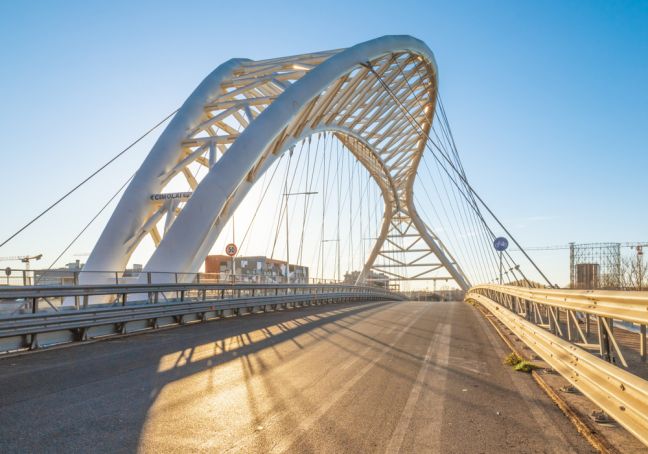
Most tourists visit Ostiense for its Eataly outlet, which is the largest in the world, but the neighborhood has much more to offer. Ostiense is characterized by trendy street art and a modern-mindset. The population in Ostiense tends to be young, open-minded, and forward-thinking.
Ostiense is also one of the most international neighborhoods in Rome. Known for a lively music scene, Ostiense has a keen appreciation for the arts. Italian street-artist Blu has helped put Ostiense on the street-art map with multiple large-scale street art installations that play off of buildings’ histories and architectural patterns to make social commentaries.
In 2018, the neighborhood made international headlines by installing “Hunting Pollution,” the largest piece of eco-friendly street art in Europe. The mural, which depicts a bird emerging from water, is painted with a specific type of paint that produces oxygen and combats smog--an all-in-one art piece, political statement, and symbol of the forward-thinking Ostiense mindset. Ph: ValerioMei / Shutterstock.com
Monteverde Vecchio
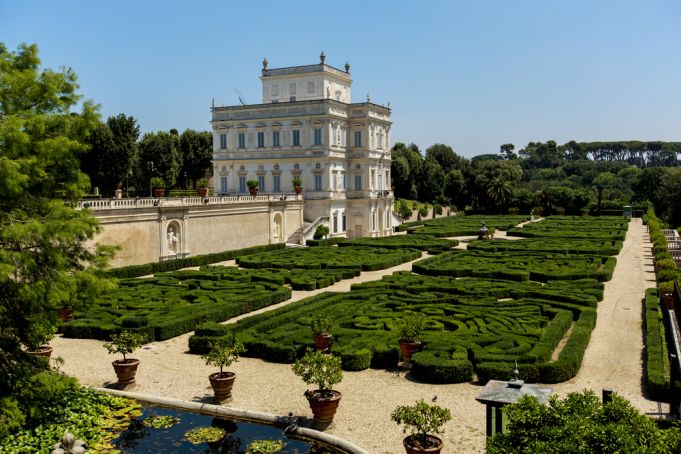
Monteverde Vecchio, located on the Gianicolo hill, is a calm escape from the hustle and bustle of Rome’s city center. Monteverde Vecchio is home to many elderly Romans, so the atmosphere of the neighborhood is peaceful and residential. This neighborhood has a suburban feel despite being next to Trastevere.
Buildings and streets are clean and well-kept, as are the many small gardens in the neighborhood. Villa Doria Pamphilj, one of the biggest parks in Rome, is located in Monteverde Vecchio. While Monteverde Vecchio is not as lively as other neighborhoods in the city, it offers a refreshing change of pace for tourists, and is a great home-base for long term visitors.
The American Academy and The American University of Rome are located in Monteverde Vecchio, so there is a small subculture of American artists and international students.
Testaccio
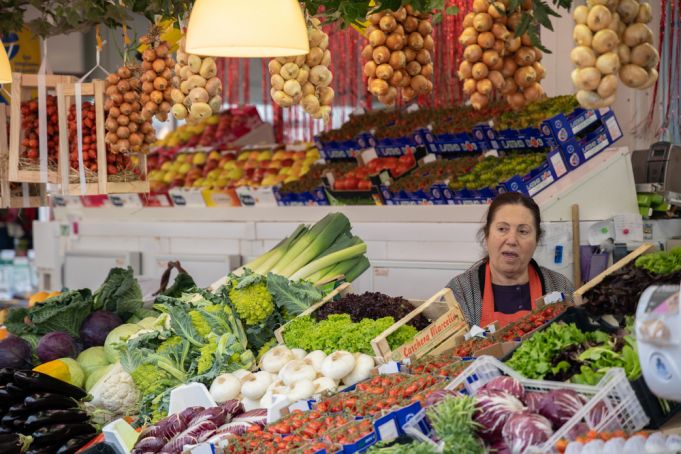
Testaccio is a Roman foodie neighborhood. In the 1900s, life in Testaccio revolved around the Testaccio slaughterhouse, or Mattatoio.
During that time, the Testaccio Mattatoio was the largest in Europe, and the neighborhood was home to its many blue-collar workers. Testaccio cuisine was formed from the unwanted scraps of the slaughterhouse: the quinto quarter (fifth quarter), as it was called. Today, many famous Roman meat dishes originate from Testaccio.
Though the slaughterhouse has been closed since the 1970s, the site now houses a school, museum, café, and weekend farmers markets.
The neighborhood’s history of food remains its backbone. Testaccio offers countless traditional Roman restaurants and charcuteries, such as Agustarello a Testaccio and Volpetti Taverna.
The Mercato di Testaccio (Testaccio market), located around the corner from the ex-slaughterhouse, is an essential destination for anyone who wants to get the inside scoop on Rome’s food culture.
Besides food, Testaccio is known for Monte dei Cocci, the mountain of terracotta shards that once functioned as a sophisticated Roman landfill. The atmosphere of Testaccio is family-friendly. Piazza di Testaccio, the central piazza in Testaccio, is a great place to spend an afternoon people-watching. Ph: Sjors Gijsbers / Shutterstock.com
Monti
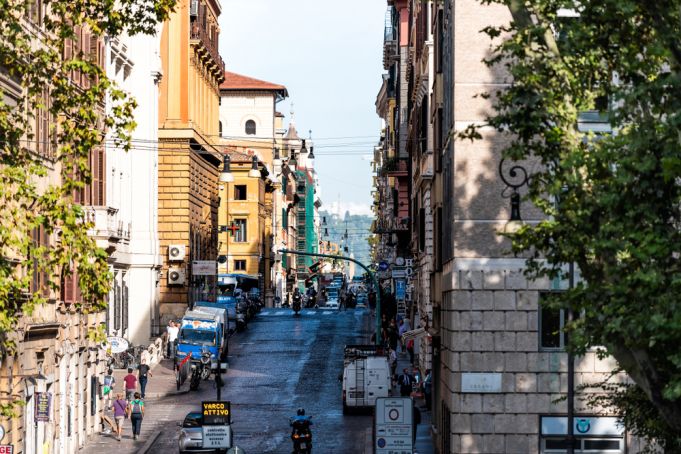
Monti is a young, trendy neighborhood in Rome. Like a classier, less-touristy Trastevere, Monti offers a small-town atmosphere while being close to busier neighborhoods, such as Esquilino and Termini.
Monti is known for its art scene, with a specific passion for fashion. One of Monti’s main attractions, Palazzo delle Esposizioni is a hotspot for the arts.
Inside, one can find a cinema, bookstore, Michelin-star restaurant, and renowned art gallery.
The Mercato di Monti (Monti market) hosts local fashion designers, vintage vendors, jewelry makers, and up-and-coming artists. Throughout Monti, one can find a lifetime’s worth of vintage clothing in the many small negozi, or clothing shops.
Piazza della Madonna dei Monti is the heart and soul of Monti. Stop here for a spritz and feel like a local while enjoying a dazzling view of central Rome. Ph: Kristi Blokhin / Shutterstock.com
Prati
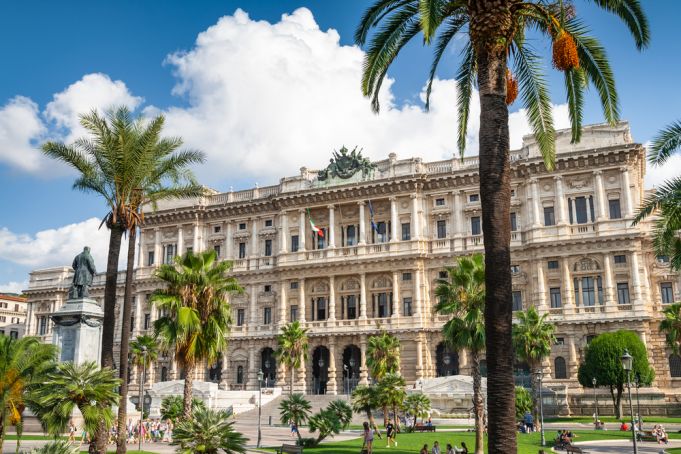
The Prati neighborhood feels like it belongs in another city.
With wide, open streets and a mixture of architecture styles, Prati offers a classy, European experience that wouldn’t feel particularly Roman without its residential population. Many white-collar Romans live in Prati, where parking and housing options are cheaper and more abundant than in the Centro Storico.
Prati hugs the Tiber River on one side, and the Vatican City on the other. In the evenings, Romans stroll on the high-end Via Cola di Rienzo, the popular shopping street that bisects the neighborhood.
For those with a special interest in architecture, stop by the Chiesa Sacro Cuore Del Suffraggio, a church known for an intricate neo-gothic exterior that closely resembles that of the Duomo in Milan.
Inside, don’t miss the eerie Museum of the Souls of Purgatory. Other must-see sites include the Olympic Stadium and Piazza Cavour, a chic, well-connected Piazza that emphasizes the surrounding architecture, including the Corte di Cassazione, the Palace of Justice, in which the Supreme Court meets. Ph: Pani Garmyder / Shutterstock.com
Top photo: Catarina Belova / Shutterstock.com

















